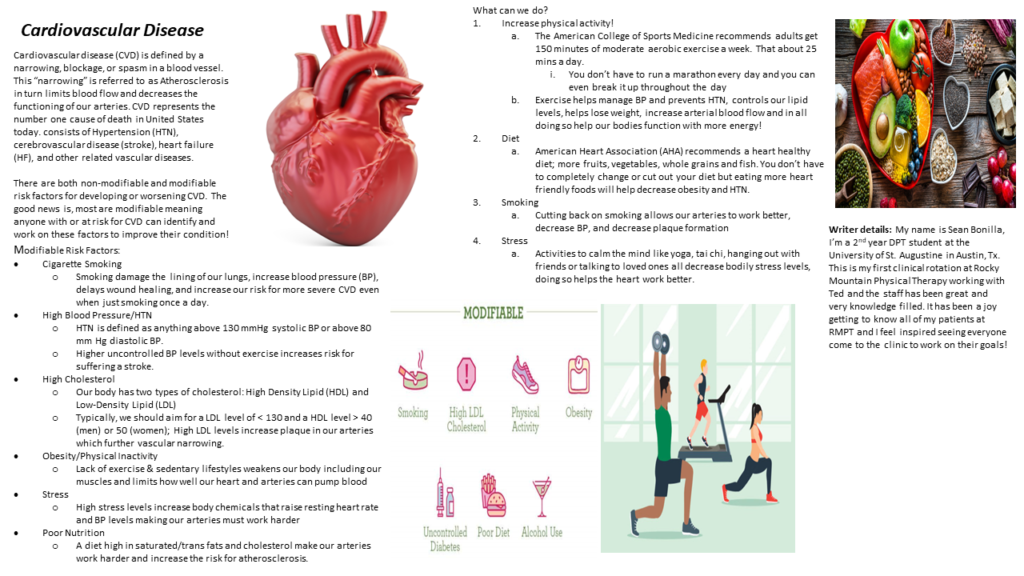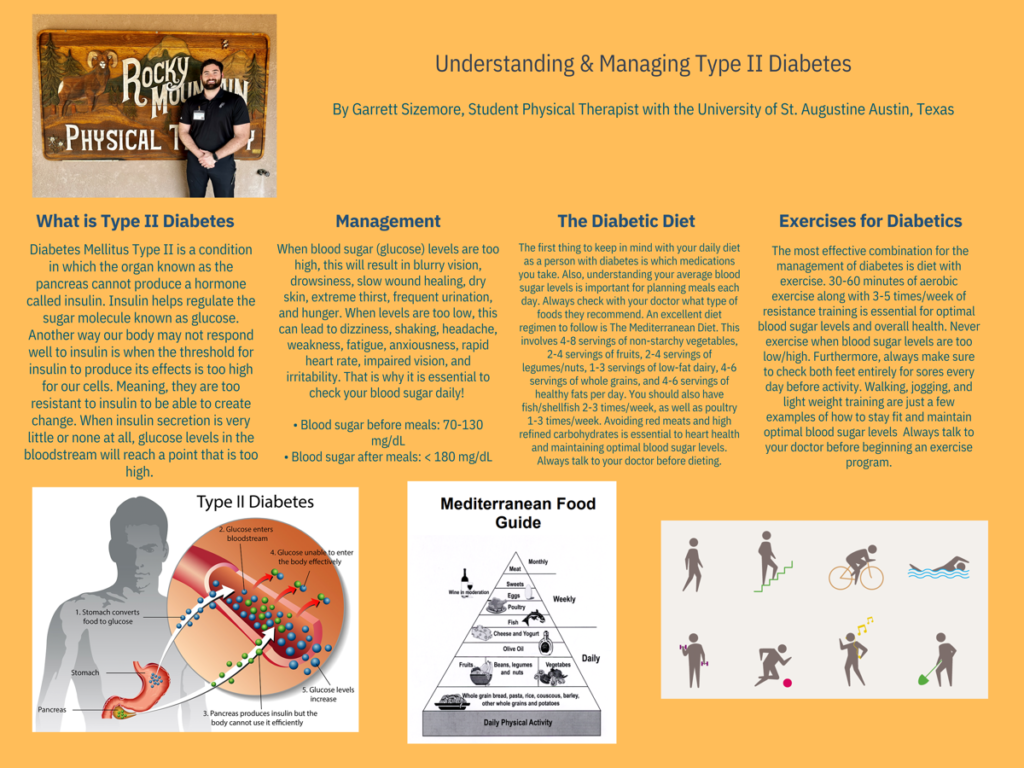Personal physical health, mental health, and even community health are all interconnected and provide a level of quality of life.
The Health page contains information about upcoming health-related events and activities in the community. Additionally, Rocky Mountain Physical Therapy will provide articles in the Our Health section of this page that suggest activities, life-style, and nutrition that can improve our over-all health.
Select from the links below to jump to that article listed.
- Annual Family Health Fair a Great Success
- Do Omega-3 Fatty Acids Found in Fish Oils Improve Health?
- New Drugs for Obesity – A blockbuster or a drug with potential drawbacks?
- First Physical Cause for Long COVID Discovered
- Rocky Mountain Physical Therapy – Adam Johnson – Tips for Dealing With Winter Joint Pain
- Cigarette Smoking Effects in Relation to Physical Therapy
- Tainted Cinnamon
- Fun Facts About Your Bacteria in Your Gut
- Artificial Sweeteners – Are they safe to consume?
- Rocky Mountain Physical Therapy – Esther Choe
- Beware of Tianeptine – Gas Station Heroin
- Stop wasting your money on Multivitamins!
- Raton Regional Aquatic Center Offers Classes
- Life Expectancy in New Mexico
- Pinwheel Healing Centers Offers a Variety of Health and Well-Being Services
- Shrinking Medical Services at Miners Colfax Medical Center
- Overdose Deaths, Suicides, and Drug-Related Emergencies in Colfax County
- Covid Vaccine Update
- Students Provide Benefits to Raton at RMPT
- Rise in Syphilis Cases in Babies
- Raton High School Hosted Community Blood Drive
- Local Swimmer Reaches 900 Mile Milestone
- Our Health – health related articles by Rocky Mountain Physical Therapy staff
Annual Family Health Fair a Great Success
by Sally Hoger
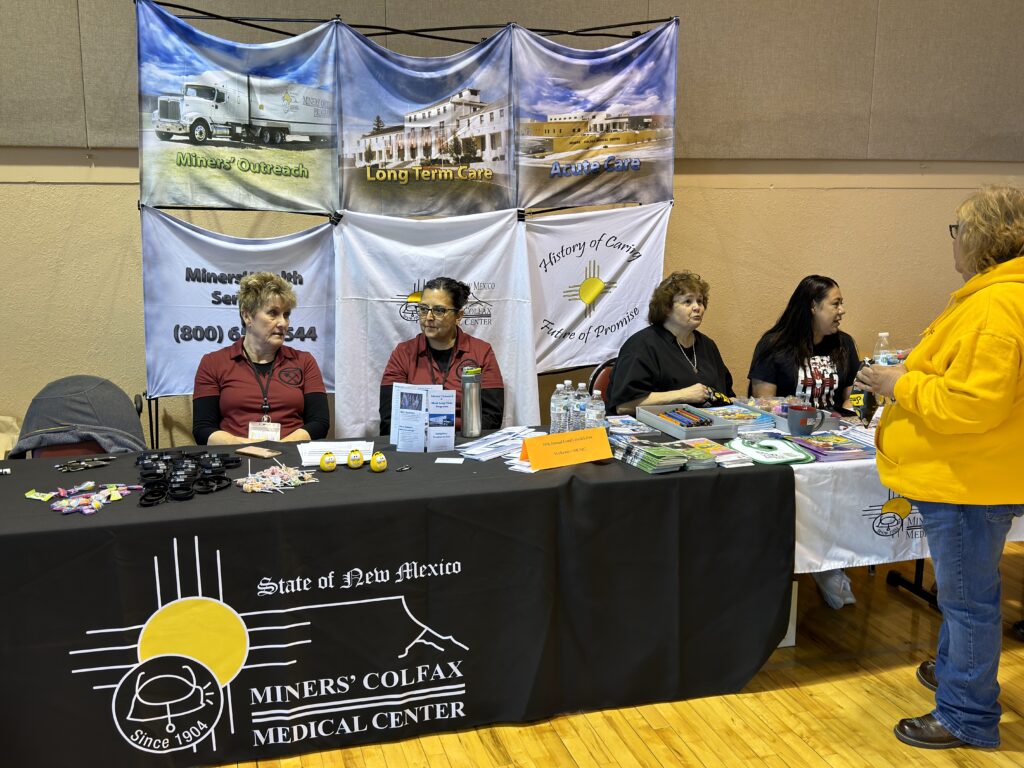
The convention Center was bustling with venders and participants attending the annual health fair. Visitors entering the fair had the opportunity to try a DWI simulator provided by the Colfax County DWI/UAD Prevention Program. Inside the main room and spilling over into the side area representing everything from focus on children (Growing Great Kids, Colfax County Health Council, HeadStart, Team Builders, the State of New Mexico Children, Youth and Families Department), to rural health (MCMC Hospital and MCMC Long Term Care and Everyone Deserves, a State Program for rural mental health, and a new Medicaid medical transport system), to Medicare and Medicaid information.
But if you missed the fair, one of the main reasons to attend is the availability of free and reduced-price medical services.
- Vaccines were offered by Blue Cross Blue Shield including COVID, FLU and
Hepatitis vaccines. - The Lions Club offered Vision Screening
- Blood tests were available including:
Complete Metabolic Panel: tells you if you may have diabetes, kidney or liver problems.
Blood Count: May detect some blood cancers or anemia.
Lipid Panel: Tells you if you have high cholesterol or may have heart disease.
These tests are available at bargain prices.

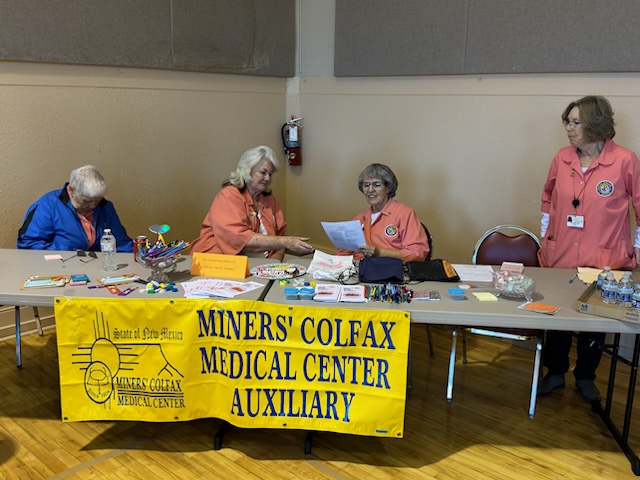

Posted April 14, 2024
Do Omega-3 Fatty Acids Found in Fish Oils Improve Health?
By Sally Hoger
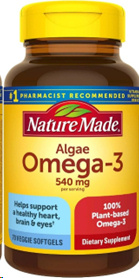
Omega-3, or Fish Oil, is the most widely used supplement in the United States. Manufacturers make a multitude of claims pertaining to the benefits of this product including heart health (less likely to have a heart attack), stroke, brain function (improves learning and memory), stimulates immune system, eye health, improves skin and joints and reduces symptoms of attention deficit hyperactivity disorder (ADHD) and asthma and aids in sleep in children.
It sounds like Omega-3 does it all. Examination of scientifically based evidence (data from clinical trials) has determined the following:
- Research indicates that omega-3 supplements don’t reduce the risk of heart disease or stroke. However, people who eat oily fish such as salmon, cod, or tuna one or more times a week are less likely to die of heart disease, particularly if they have already had one heart attack. This may be due to the omega-3 in the fish, or it may be because people who include fish in the diet eat a healthier diet anyway.
- High doses of omega-3s can reduce levels of triglycerides.
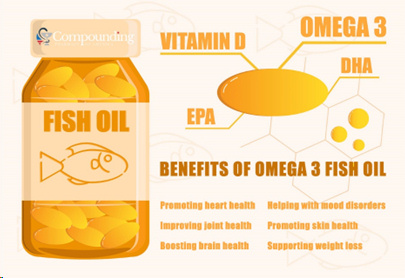
But wait – if triglycerides can be lowered, doesn’t that reduce the risk of heart disease? The answer to that is there is very high doses of prescription omega-3 are used to lower triglycerides in people who already have very high levels of triglycerides and are at risk of pancreatitis. The high doses can cause heart fibrillations though. It is not safe to take over the counter supplements at high doses because they differ in composition from the prescription type.
For the following conditions, there is either no evidence for an effect or studies are conflicting, and more research needs to be done:
- ADHD, asthma in kids
- Depression and other mental conditions
- Alzheimer’s and dementia
- Immune function
- Rheumatoid arthritis
- Eye diseases
Conclusions:
“We have so many evidence-proven tools to prevent heart disease – but fish oil supplements are not one of them.” Ann Marie Navar, M.D., Ph.D. , Cardiologist, UT Southwestern Medical Center
Hard data suggesting little effect from omega-3 have not curtailed their use. So, if you want to continue taking these supplements, they are generally considered safe, but consult you doctor if you take any drugs for a clotting disorder or are allergic to fish and do not take high doses.
You can learn more about omega-3s here: https://www.nccih.nih.gov/health/omega3-supplements-in-depth

Posted April 6, 2024
New Drugs for Obesity – A blockbuster or a drug with potential drawbacks?
by Sally Hoger
You have probably heard about the new drugs that people are using for weight loss with pretty amazing results. The two drugs approved in the US are Wegovy and Ozempic. They are actually the same drug, which mimics a hormone that slows down the emptying of the stomach, so people feel less hungry. Ozempic is approved for people with diabetes and Wegovy is for people with obesity and other health problems, especially heart problems.
Here are a few facts to know about the drugs:
- Do they work?
Yes, on average a person can expect to lose from 12% to 20% of body weight over a year. So, if you weigh 200 pounds, that’s about 30 pounds. You inject the drug into your abdomen once a week.
- Do I have to keep taking the drug indefinitely?
Yes, all evidence shows that if you stop taking the drug you will quickly gain back the weight and if you have diabetes, you will face problems controlling it. But the weight control drugs do often eliminate the need for other drugs such as those for high blood pressure, statins, or diabetes control. People taking the drugs tend to be very satisfied with the results.
- How much do they cost? Does my insurance cover them?
The cost of the drugs is over $1000 per month and most insurance companies do not cover them for weight loss. If you have diabetes or other health issues, insurance may cover them, and Medicare just announced it will cover Wegovy if the person also has heart problems. There is such a high demand, pharmacies are often out of the drugs.
- Are there any side effects?
The most common side effect is stomach pain or discomfort. While most people are very good about not missing doses, gastric problems are the top reason for stopping use. There is also a chance of retinopathy in people with diabetes, so it is important to monitor eye health. Also, some people complain that weight is lost in the wrong place – the face – causing them to look older, a phenomenon dubbed “Wegovy face.”
- What if I take the drugs but continue eating junk food, sugary drinks and not exercising?
Good question, but all studies have been conducted in groups that had a healthy diet and exercise. Diet and exercise maximize the benefits and not having a healthy diet or exercising is listed as a top cause for people not losing weight on the drug.

Posted March 31, 2024
First Physical Cause for Long COVID Discovered
By Sally Hoger
Long COVID is described as continued symptoms after a COVID infection and can be debilitating enough to have a severe impact on daily life. Long COVID can last for months or years and symptoms may be like the original infection, but more often different symptoms such as chronic pain, brain fog, shortness of breath, chest pain, and intense fatigue appear. It is known that one of the main symptoms of long covid is fatigue, but we did not know until recently what changes in the body cause these symptoms. In January, a paper from the journal Nature Communications confirmed that people with long COVID have a reduced ability to exercise using a stationary bicycle compared to more healthy persons and that oxygen uptake is lowered. Examination of muscle tissue showed some unusual deposits in muscle tissue as well as a decrease in enzymes usually produced by mitochondria, tiny structures we have in all of our cells that provide power to our cells. Impaired mitochondria in the brain and nervous tissue may also explain the brain fog too, although more research is needed to confirm. There is really no specific treatment for long COVID, but now we can start looking for treatment that targets or stimulates the abnormal mitochondria. The odds of getting long COVID after being infected are unknown, probably about 1% to 2% of all cases result in long COVID. Vaccination may prevent getting COVID in the first place and several studies have shown that even if a vaccinated person does get COVID, the chance of getting long COVID are much lower than in unvaccinated people.

Posted March 31, 2024
Tips for Dealing With Winter Joint Pain
Rocky Mountain Physical Therapy – Adam Johnson

I am originally from Traverse City, MI and am a doctoral student in Physical Therapy from University of St. Augustine in Austin, TX. In my free time, I enjoy going for walks with my dog, cooking, singing, working out, and watching documentary films. I will be graduating in April 2024.
Adam Johnson
Many people who experience joint pain notice that their pain can be more severe during the winter season. Some people even notice a change in their joint pain depending on barometric pressure changes. While we can’t control the weather, there are many factors that affect joint pain that we do have control over.
In this article, I will discuss 5 ways that you can reduce your joint pain in the winter. However, these methods will also be effective at any time of year.
Get moving!– A catchy phrase in the physical therapy world is, “motion is lotion.” As you move your joints, whether on a walk outside or in a gym, lubricating fluid is released within each joint that facilitates easier more comfortable movement. In addition, getting your body moving causes your body to produce endorphins, which help to reduce pain. Any exercise will produce some level of endorphins, though more vigorous aerobic exercise that gets your heart rate up and causes you to break a sweat will produce a stronger effect.
Heat– Therapeutic heat can help to both relax tight muscles and relieve sore joints. One of the easiest ways to use this method is by taking a hot bath or shower. Other ways to apply therapeutic heat more specifically can be achieved with such products as microwaveable heat packs and electrically powered infrared heating pads.
Eat a less inflammatory diet– Your diet can have a big impact on your pain levels. In general, the more inflammatory foods are in your diet, the worse your pain will tend to be. Notable inflammatory food items include sugar, processed foods, alcohol, and fried foods. A diet rich in anti-inflammatory food items such as fruits and vegetables helps to produce a less inflammatory environment in the body. Spices such as turmeric also have anti-inflammatory properties. The more anti-inflammatory items you include in your dieton a daily basis, the less pain you will tend to experience.
Improve sleep–Quality sleep is the foundation of good health. If you’re not sleeping well, not only will you be tired – you will also tend to be in more pain. Poor sleep significantly increases inflammation in the body and this more inflamed environment tends to make pain conditions worse. Ideally you should be getting 7-9 hours of sleep a night. Some ways to improve sleep quality include a consistent sleep schedule, limited caffeine in the afternoon/evening, and taking a hot bath or shower before bed.
Magnesium supplementation– Magnesium is a mineral with countless important roles in the body including helping with muscle relaxation and stress-management. In general, the more stressed out you are, the worse your pain levels will tend to be. Also, having high stress levels will tend to negatively affect sleep, increasing inflammation in the body. Most people don’t consume the optimum amount of magnesium in their normal diets, so taking a magnesium supplement can be helpful to reach this target. Magnesium supplements are commonly available in grocery stores as drink mixes such as “Calm” by Natural Vitality.

Cigarette Smoking Effects in Relation to Physical Therapy

Rocky Mountain Physical therapy: Josh Flaherty, SPT
- Smoking narrows blood vessels leading to decreased oxygen and nutrient blood to healing sites.
- Non-smokers with a broken bone will heal 80% quicker than a smoker with a broken bone.2
Smoking can increase risks after joint replacements3
- Higher rates of hospital readmission following Total Hip replacements
- Relative Risk Ratio of 18-32% of developing lower respiratory tract infection/heart attack in smokers compared to non-smokers
- 1 year mortality rate of smokers following THA/TKA hazard ratio is 37-52% compared to non-smokers and ex-smokers
- Range of motion of replaced joint is lower postoperatively in patients that smoke (2.5 points less on Oxford hip score and 3.2 points less on Oxford knee score. Scores taken 6 months after operation.)
- Adverse effects following surgery seen in smokers were not seen in ex-smokers!
Physiological effects on Cardiopulmonary systems1
- Accelerated decline in forced expiratory volume of lungs, a 19% reduction in vital lung capacity, and forced expiratory flow significantly affected creating potential for small airway disease
- Maximum power output reduction from 825kpm/min to 575kpm/min indicating muscles are impaired by smoking
- VO2 max (amount of oxygen uptake during exercise) reduction of 2L/min to 1.35L/min
- These reductions in values effect daily life, not just exercise!
Benefits of quitting4
- Within days your blood vessels will regain normal function
- within weeks senses of taste/smell will improve
- within months symptoms of bronchitis and lung function improve
- reduction in risk of heart attack/stroke within 2-5 years and lung cancer in 5-9 years
- MORE MONEY IN YOUR WALLET
TIPS TO QUIT4
- Make a list of reasons to quit and a list of others who have quit, and have someone join you in the journey
- Utilize low calorie snacks/sugar free gum as oral distractions
- Reward yourself with saved money
- Nicotine replacement therapy tapering down dosage of patches
- Nicotine receptor blocker prescription drugs; Bupropion & Varenicline
- Cessation hotline 1-800-QUIT-NOW
References:
- 1.Adatia A, Wahab M, Shahid I, Moinuddin A, Killian KJ, Satia I. Effects of cigarette smoke exposure on pulmonary physiology, muscle strength and exercise capacity in a retrospective cohort with 30,000 subjects. PLoS ONE. 2021;16(6):1-13. doi:10.1371/journal.pone.0250957
- 2.Csatari J, Cooper A. 12 new reasons to quit smoking now. Men’s Health. 1995;10(5):36. Accessed February 10, 2024.
- 3.Matharu GS, Mouchti S, Twigg S, et al. The effect of smoking on outcomes following primary total hip and knee arthroplasty: a population-based cohort study of 117,024 patients. Acta Orthop. 2019;90(6):559-567. doi:10.1080/17453674.2019.1649510
- 4.Smoking cessation: New ways to quit. Harvard Men’s Health Watch. 2008;13(4):4-7. Accessed February 11, 2024.

Tainted Cinnamon
March 10, 2024 – by Sally Hoger
Cinnamon contaminated with lead has been widely distributed in the United States, causing over 400 poisoning cases in 43 states. The source of the contaminated product has been traced to a single grinding wheel in Ecuador.
Much of the cinnamon was in pouches of applesauce for kids and some was in bags and jars on the spice shelf. These products were largely sold at discount stores such as Dollar Tree and Family Dollar and also by Amazon. The pouches contained far higher levels of lead than the jars of cinnamon – about 2000 to 5000 parts per million. There is no safe level of lead consumption and any of these products should be discarded. Symptoms of lead poisoning do not typically show up right away. Over time, babies and children are most affected with physical and mental problems but adults can have long-term effects too, such as headaches, abdominal problems, memory problems and low sperm count. Miscarriages and still births can occur in pregnant women.
The FDA cited WanaBana, an applesauce manufacturer and packager located in Ecuador, for failing to test its cinnamon applesauce pouches for heavy metals. The agency said the company should have taken steps to mitigate the risk that cinnamon it was buying for its product. An FDA inspection of the plant found neither raw materials nor finished product were tested for heavy metals, some pasteurization steps were skipped and there were problems with adequate sanitary facilities.
The FDA has limited jurisdiction to police food manufacturers in other countries, so we always run the risk of contaminated imported food. That leaves the burden on manufacturers who must be vigilant in testing. The tainted cinnamon was obtained from Austrofood, also located in Ecuador. The FDA has no authority over this producer because they do not ship their product directly to the U.S.
If you believe that you or your child may have been exposed to lead, you should see a doctor for testing. The cost of blood lead testing for children enrolled in Medicaid is covered by the Centers for Medicare & Medicaid Services. In addition, there is treatment available for lead poisoning.



Fun Facts About Your Bacteria in Your Gut
February 11, 2024 – By Sally Hoger
There has been tremendous interest and research in the study of gut flora along with endless advertisements for supplements purported to correct our gut bacteria to improve health. Here is a summary of what we know. Keep in mind: what we know is FAR less than what we do NOT know on this topic.
- First: what is gut, or bowel, flora? It is the collection of microbes, mostly bacteria, that live in your small and large intestine. Each person has about 100 trillion microbes representing as many as 5,000 different species and weighing approximately 2 kilograms.
- We know everyone’s gut flora is not the same and is influenced by:
- Geography: The gut microbiome of Americans and most other Westernized, industrialized populations is less diverse and dominated by different bacterial species than that of people from rural, less developed populations. A general shift away from natural environments with little exposure to soil, animals, and other environmental microbes seems to be impacting the gut microbiome in potentially detrimental ways.
- Diet: Processed foods can damage the lining of the intestine causing inflammation and altering flora while high fiber foods promote fermentation, which leads to more diverse gut flora. Greater diversity is also promoted by eating a varied diet consisting of mostly plant-based foods.
- antibiotic use: Antibiotic therapy alters the patterns of gut microbiota and when given early in life (infancy and childhood) may shift the bacterial profile towards one that promotes obesity, metabolic abnormalities and/or autoimmune diseases. Antibiotic use in adults can wipe out and markedly change gut flora.
- We know gut flora is different in obese people compared to those with normal weight and in people with diabetes, but we are not yet sure what this means.
- Probiotics – do they work?
Probiotics are certain bacteria that can be consumed to hep modify gut flora. They are available as pills or in fermented foods such as active-culture yogurt, kefir, kimchee, kumbucha and sauerkraut. There is convincing evidence that the regular consumption of these foods increases diversity of gut flora. The pill form is suspicious because the bacteria do not survive well in dry conditions and the manufacturers are not regulated by the FDA so do not have to show they have any effect.

Artificial Sweeteners – Are they safe to consume?
February 4, 2024 – By Sally Hoger
Any nutritionist and most people agree consuming too much refined sugar has adverse effects on health including contributing to obesity and diabetes and taking the place of healthier foods. The average American consumes way too much sugar, much of from soft drinks and processed foods. People trying to consume less sugar or trying to lose weight naturally turn to artificial sweeteners to reduce daily calorie intake.
Lately, you may have heard that there may be safety issues associated with these products. This is a question that is difficult to answer definitively because there are conflicting results from research done on safety of sweeteners.
First: What are the available sweeteners?
- The blue packets are aspartame, the most popular brand name being Equal. Aspartame is about 200X sweeter than sugar.
- The pink packets are saccharin, otherwise known as Sweet N Low. Saccharin is about 300X sweeter than sugar.
- The yellow packets are sucralose, also known as Splenda. Sucralose is 600-800X sweeter than sugar.
Second: What are the potential problems with artificial sweeteners?
The Center for Science in the Public Interest is a nonprofit, non-government group that evaluates food safety, nutrition, and food access. Here is their statement regarding artificial sweeteners:
“One thing seems clear: you’re better off drinking beverages with sugar substitutes than you are consuming sugary drinks, which contribute to weight gain and are linked to a higher risk of heart disease, type 2 diabetes, and obesity, not to mention tooth decay. That said, try to avoid aspartame, which tops our list of risky artificial sweeteners and appears in such popular beverages as Diet Coke, Diet Pepsi, and Diet Dr. Pepper.”
Aspartame is associated with liver cancers and leukemias, but moderate amounts need to be consumed.
There is some evidence that saccharin is associated with bladder cancer, but only at high doses.
Sucralose has been associated with changes in gut flora which could affect blood sugar, inflammation, body weight and absorption of drugs and nutrients. However, the evidence is not yet conclusive.
The FDA still considers all three safe to consume at moderate levels. Moderate levels may be one diet soda daily or about 200 – 300 mg per day.
Third: What are better sugar substitutes?
So far, stevia, monk fruit and erythritol have not shown any adverse health effects.

Rocky Mountain Physical Therapy – Student Physical Therapist
January 31, 2024

Esther Choe
I was born and raised in Seattle, WA and currently working towards a doctorate in Physical Therapy from the University of St. Augustine in Austin, TX. I will be graduating in April 2024 and hoping to specialize in orthopedics/sport physical therapy after graduation. Osteoarthritis Osteoarthritis (OA) is a degenerative joint disease. This occurs over time where the tissues, most likely cartilage, in between two bones break down and deteriorate in size over time. Signs and symptoms of OA are usually joint pain after rest or stiffness in a joint that develops in a short period of time. OA is seen most often in hands, knees, hips, and spine, but can be present in any joint. Management and Treatment Once OA is diagnosed what should be done? Although OA is non-reversible, treatment can reduce pain. Physical therapy and/or occupational therapy has been shown to help decrease pain in a conservative approach, and strengthening and stabilizing muscles around the joint will increase flexibility and reduce pain. Aside from PT, it is important to keep moving and remain active. If walking on pavement is too difficult depending on the location of the joint affected, try aquatic therapy to decrease pressure on the joint. After trying conservative treatment for AT LEAST 4-6 weeks as this is the time it will take for muscles to make physiological change, and treatment does not work, then surgery or injections should be considered. Exercise Examples: Hip OA: – Walking – Step Ups – Hip 3-way – Squats Knee OA: – Walking – Squats – LAQ – Hamstring curls Hand OA: – Putty – Rubber Band finger extension – Finger tip touch, Knuckle Bend
Osteoarthritis
Osteoarthritis (OA) is a degenerative joint disease. This occurs over time where the tissues, most likely cartilage, in between two bones break down and deteriorate in size over time. Signs and symptoms of OA are usually joint pain after rest or stiffness in a joint that develops in a short period of time. OA is seen most often in hands, knees, hips, and spine, but can be present in any joint.
Management and Treatment
Once OA is diagnosed what should be done? Although OA is non-reversible, treatment can reduce pain. Physical therapy and/or occupational therapy has been shown to help decrease pain in a conservative approach, and strengthening and stabilizing muscles around the joint will increase flexibility and reduce pain. Aside from PT, it is important to keep moving and remain active. If walking on pavement is too difficult depending on the location of the joint affected, try aquatic therapy to decrease pressure on the joint. After trying conservative treatment for AT LEAST 4-6 weeks as this is the time it will take for muscles to make physiological change, and treatment does not work, then surgery or injections should be considered.
Exercise Examples:
Hip OA:
- Walking
- Step Ups
- Hip 3-way
- Squats
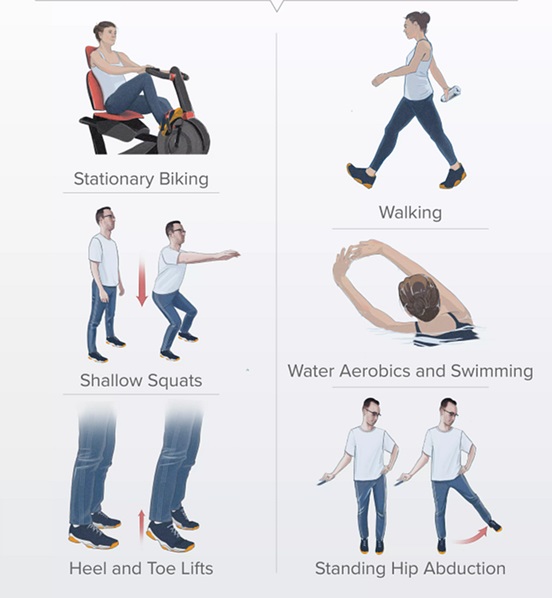
Knee OA:
- Walking
- Squats
- LAQ
- Hamstring curls
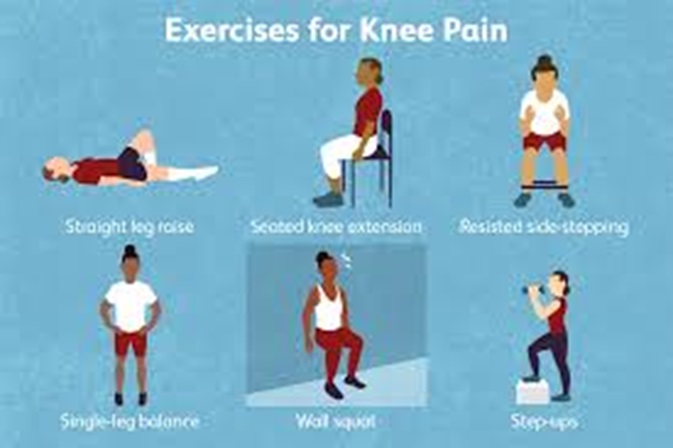
Hand OA
- Putty
- Rubber Band finger extension
- Finger tip touch, Knuckle Bend
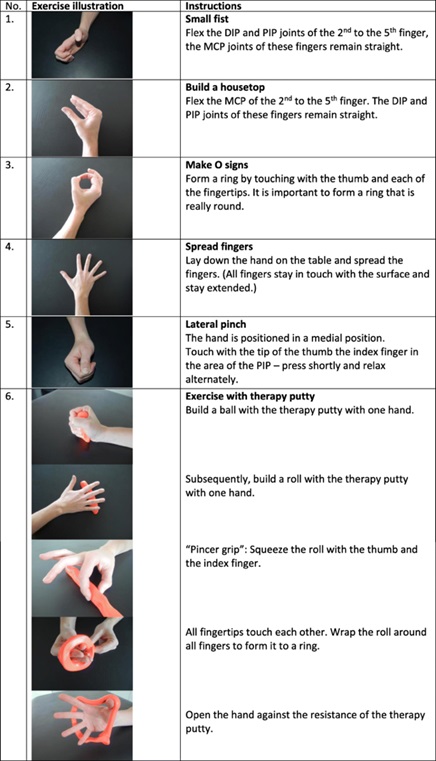

Beware of Tianeptine – Gas Station Heroin
January 28, 2024 by Sally Hoger
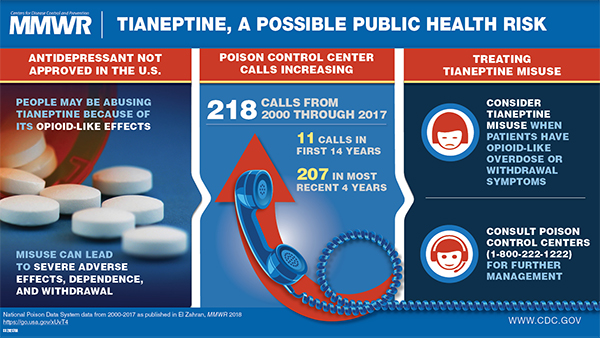
Tianeptine is an antidepressant that is available over-the-counter and is often sold in convenience stores and smoke shops and online for use as a recreational drug. The compound produces euphoria similar to opiates. This drug is not approved as a medical treatment in the United States but is available at lower doses in some countries to treat anxiety and depressive episodes. It is also addictive. Yet, the drug is available as an unregulated supplement in all but nine states, including New Mexico.
Tianeptine is also known as Zaza, Tianna, Neptune’s Fix or Gas Station Heroin. Recently we have seen an increase in adverse effects such as hallucinations, vomiting and loss of motor control and seizures and there have been some deaths associated with the drug. The reason for bad reactions to the drug is because often the drug is mixed with synthetic cannabinoids or other compounds. In addition, hospitals and clinics have reported a surge in patients suffering from tianeptine withdrawal.
The FDA has warned about adverse effects of the drug since at least 2018. With the current increase in hospitalizations, the FDA issued another warning in November 2023. However, tianeptine is not currently controlled under The Controlled Substances Act. In my opinion, this is a serious shortcoming in our drug approval process and may stem from lack of funding and personnel at the FDA. Currently, banning the substance must take place at the state level and even then, it may be obtainable online.

January 21, 2024
Stop wasting your money on Multivitamins!
By Sally Hoger
Many people take multivitamins hoping they will provide that nutrient boost that will keep them healthy and provide what may not obtained from a less-than-perfect dies. In 2021, people in the US spent an estimated almost $50 billion on dietary supplements and the dietary supplement industry spent about $900 million on marketing.
Supplements do have a very important role in diet therapy for individuals that have a vitamin or mineral deficiency such as scurvy caused by lack of Vitamin C or rickets, caused by Vitamin D deficiency. But we rarely see such deficiencies in the United States.
A large body of evidence indicates multivitamin pills have no benefit whatsoever to most Americans.
The U.S. Preventive Services Task Force, The American Heart Association and other National Medical Associations worldwide now recommend NOT taking a multivitamin pill.
Some of the reasons and research are as follows:
Our population has access to a quality diet with a variety of nutritious foods. Vitamins and minerals are only needed in very small amounts and many foods such as cereals and dairy products are fortified with needed nutrients. The vitamins and minerals consumed in food are absorbed much more readily by the body than those taken in pill form.
There is no evidence to support supplementing with an excess of vitamins and minerals such as taking high doses of Vitamin C for colds. In fact, too much Vitamin C can cause diarrhea. Excess water-soluble vitamins such as Vitamin C and the B-complex vitamins are typically not stored in the body and excess leaves in the urine. Americans have been noted to have very expensive urine.
Some vitamins such as Vitamin E and Beta-carotene are toxic at elevated levels because they are fat soluble and build up in fatty tissues instead of being excreted right away like Vitamins C and most B Vitamins. Taking too much Vitamin A over time causes skin and hair problems followed by liver damage. Too much Vitamin A can also cause birth defects.
Additionally, an editorial published this year in The Journal of the American Medical Association (JAMA) by scientists conducting research at Northwestern University stated that taking multivitamins have no effect on the prevention of heart disease, cancer, or mental decline.
More information can be found here:
There are circumstances where supplements are needed, so heed your doctor’s advice if you are prescribed a supplement but ignore much of what you may come across online.
Examples of necessary supplements are:
- It is recommended that all pregnant women take folic acid to prevent neural tube deficiencies. This is one situation where it is better to get the nutrient from a pill rather than from food.
- People with certain anemias may need to take iron, folic acid and Vitamin B12 to help maintain healthy red blood cells
- Osteoporosis patients need calcium and Vitamin D supplements.
- Vegetarians may suffer from a Vitamin B12 deficiency and require a supplement.
Conclusion
If you want to feel more energized, have better skin and maintain a healthy weight, consider eating a few servings of fruits and vegetables each day and skip a serving of chips or that sugary soft drink.

January 18, 2024
Raton Regional Aquatics Center Offers Classes

The Raton Regional Aquatic Center located at 100 Memorial Lane offers additional classes to its schedule.
Wednesday – Senior Stretching with Elizabeth Ortega – 10:30 am- 11:30 am, $7 (nonmembers) $3 (membership)
Tuesday & Thursday – Aqua Yoga with Loran Nava – 10:30 am -11:30 am, $10 drop in
Tuesday & Thursday – Water Aerobic with Nikki – 5:30 pm- 6:30 pm, $80, 8-week class starting on January 30th.

January 14, 2024
Life Expectancy in New Mexico
by Sally Hoger
From CDC 2021
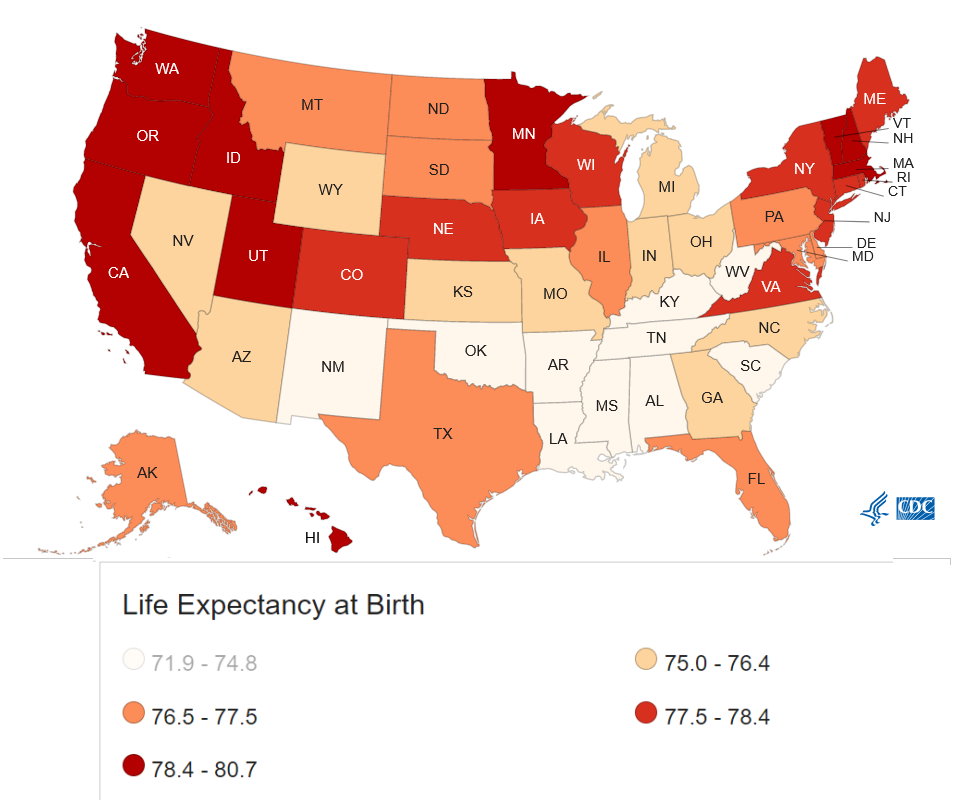
Life expectancy is one way to determine the overall health of the population within a state. In The U.S., people, on average, live the longest if they reside on the west coast or the New England states. New Mexico is in the lowest category of life expectancy. Our life expectancy of 74.5 years is longer than the deep south states, but still lower than most of the nation.
To determine causes for a low life expectancy, I first looked at the leading causes of death in New Mexico.
Leading Causes of Death in NM
The leading Causes of death in New Mexico are the SAME as deaths in the United States. What is very different about New Mexico is our rates of heart disease and cancer are lower than the national average. This may sound like a good thing, but the reason these rates are lower is because our rates of Covid deaths and deaths by unintentional injuries (car crashes, falls, fires, and drowning for example) are much higher than the national average. In fact, New Mexico rates are the second highest in the nation, after West Virginia. We have 101 unintentional injuries per 100,000 people compared to the national average of 65 out of 100,000. New Mexico deaths from Covid are also much higher than average (136 compared to 104).
That explains a lot, but there are two other factors that contribute to our lower life expectancy, and they are concerning because they both have to do with substance abuse. New Mexico’s drug overdose rate has been one of the highest in the nation for the last two decades. We rank number five in overdose deaths. In addition, we have more deaths from chronic liver disease and cirrhosis than any other state in the U.S. These deaths are primarily attributed to alcohol dependence and abuse.
I did come across one bright spot in mortality statistics for the state. Our rate of infant mortality is lower than most states. Infant mortality rate is another measure of general health status but also a measure of the quality of care received, so we are doing something right with maternal and infant care.
Statistics are from the Centers for Disease Control.

January 7, 2024
Pinwheel Healing Centers Offers a Variety of Health and Well-Being Services

In response to a growing awareness of the devasting effects of drug and alcohol addiction and abuse, several agencies have opened their doors in Raton in the past two years to combat this escalating problem in Colfax County. There are five Pinwheel locations throughout New Mexico; Raton, Taos, Roswell, Albuquerque, and Rio Rancho. The Raton location opened its doors at the Hospital Drive location two years ago to address the severe need in Raton. According to the New Mexico Department of Health 2022 Epidemiology Report, Colfax County ranks in the top 10 out of 14 critical areas of health concerns.
Pinwheel, one of the latest to begin services in Raton, is a non-profit organization that provides intensive outpatient treatment, medically assisted treatment, individual therapy, and medication management, comprehensive community support services, and sex offender treatment. Realizing that many of their clients’ lives had been completely disrupted and that they had other personal care needs, the staff at Pinwheel, located at 186 Hospital Drive, have gone the extra mile to provide food, showers, clothing, personal care products, and laundry service.
Pinwheel clients, both adults and adolescents, can be referred to Pinwheel by the local courts, a medical professional, or come as a walk-in, to receive appropriate clinically led social support services that can promote better socialization and education along with independent living tutoring, and vocational guidance. One area often overlooked by substance abuse programs is the basic human need for human interaction, and the desire to enjoy life or engage in recreational activities. Pinwheel fills that social need by providing gardening space, taking clients fishing at Lake Maloya, going for walks, visiting parks, and scheduling other indoor and outdoor activities, thereby alleviating the extreme isolation that sometimes accompanies addiction. In addition, many times clients have lost their driver’s license or their car, and since Raton doesn’t have public transportation available, the support staff at Pinwheel in Raton provides transportation to their clients for grocery shopping, getting to doctor’s appointments, or even for recreational opportunities.
Pinwheel receives referrals from the local courts and the medical community and will take walk-ins. They recently held a luncheon for several of the physicians and health care professionals, the Raton District Attorney’s Office personnel, the Magistrate Court Judge Amy Hronich and District 8 Court Judge Steven Romero, and others in order to provide information about their services. They received $1,000 each year for the past two years from the Raton Rotary Club to help prepare and maintain their community garden, which is tended to by the Pinwheel clients and staff.
The staff at Pinwheel consists of Jolyn Romero with Comprehensive Community Support Services Coordinator, Master in Social Work, Community Support Worker and Certified Peer Support Worker ; Sandy Sandoval, Community Support Services Coordinator and Certified Peer Support Worker; Benito Pardien Community Service Worker; Amanda Segura Administrative Assistant, Intake Coordinator, and Community Service Worker. The staff has many hours of education and experience in the mental health and behavioral health fields as well as some with their own years of substance abuse who have been in recovery for several years.
Romero has an extensive history of working in Colfax County for various organizations, some of which closed due to lack of funding, the Boys School, Tri-County, Soy, Agave, and Noeisis Integrative Health. Prior to coming to work for Pinwheel, Romero also worked for Krossroads, another organization in Raton dedicated to providing resources for those recovering from drug or alcohol addiction.
According to Romero, the staff are working on getting the Raton location stocked and ready to provide a Peer Drop-in Center. The center already has a shower and a washing machine for peer use as well as some clothing and food products available. But they hope to be fully stocked for a weekly peer drop-in service.
Contact Pinwheel at (505) 636-6100.


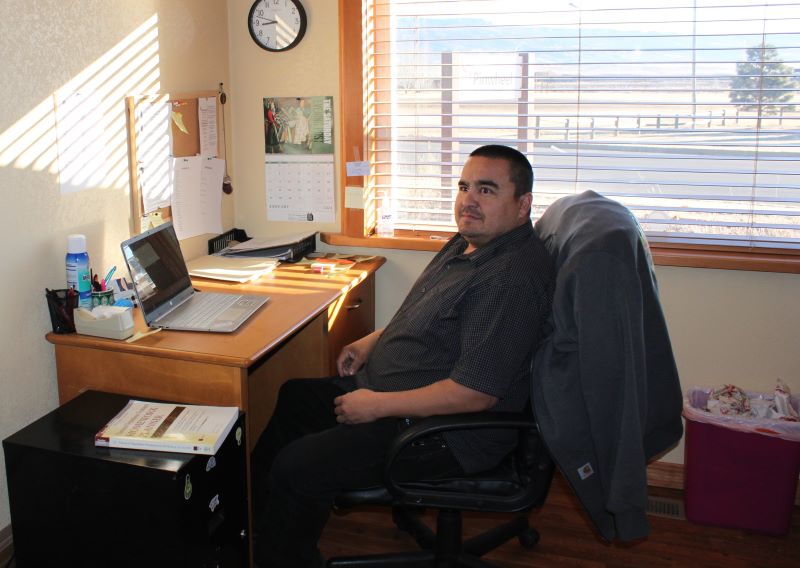

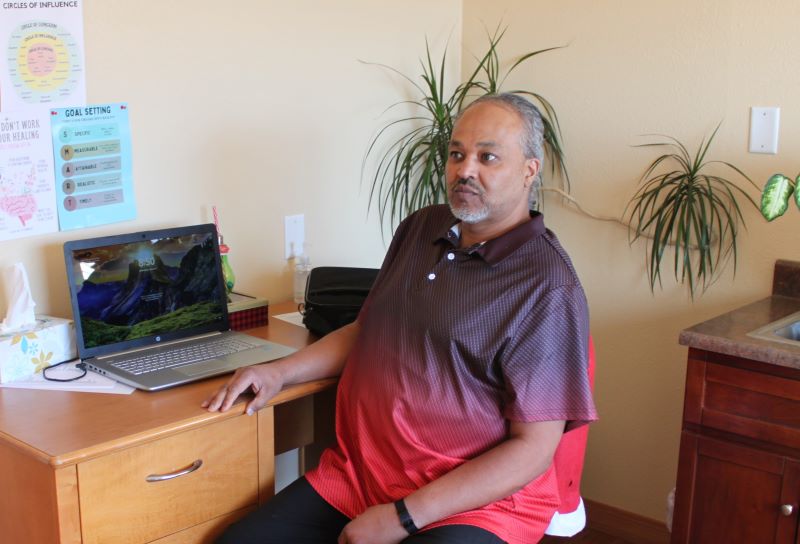

December 30, 2023
Shrinking Medical Services at Miners’ Colfax Medical Center
By Sally Hoger

Miner’s Colfax Medical Center (MCMC) is a small hospital that provides both inpatient and outpatient (clinic) care to a large geographic area. You may have heard that MCMC has recently lost some services and wondered what kind of care is available here in Raton and what kinds of care will require you to travel – or be transported to – other areas such as Albuquerque or Pueblo. What about getting an appointment at the clinic? Are there specialists available? Can anyone get an appointment? How long does it take to see the doctor? What if I need care right away? What if I do not have medical insurance?
I spoke to a representative of MCMC and will try to answer these questions but want to hear about your experiences as well. Your opinion can be shared by sending an email to editor@theratonian.com to be posted on the Letter to the Editor page of The Ratonian website.
Inpatient care at MCMC
Let’s start with inpatient care. MCMC no longer provides an Intensive care unit (ICU). That means anyone requiring that level of care will be stabilized and transported to another facility. It should be noted that MCMC still has ICU-level nurses who can care for patients as they await transport, which is sometimes delayed due to weather or administrative hurdles.
The hospital has also lost specialized oncology and cardiology care. Why? Because the specialists we had in those areas retired. This is an ongoing and serious problem in rural areas.
In 2023, 65% of rural areas had a shortage of primary care physicians, according to a report published by the Health Resources and Services Administration. For specialists it’s even worse. Younger specialists are not relocating to rural areas so more than half of rural specialists are over the age of 50.
There has long been an effort to attract new physicians to rural areas by offsetting some of the cost of medical education, but currently only about 20% of medical schools have such programs in effect.
The hospital will help cancer, heart and other patients needing specialized inpatient care determine the best facility in other areas to receive care.
Outpatient care – getting treatment at MCMC clinics.
The key to getting outpatient care is becoming an established patient. No clinic in Raton, including MCMC accepts walk-in patients. To become an established patient, an information packet must be completed. You can pick up a packet or the hospital will mail you one.


Once you are established as a patient, you can call for an appointment. For routine care such as colds, vaccines, sick kids, high blood pressure, diabetes management you may get an appointment the same day. The scheduler uses a triage over the phone method to determine if you can be seen right away.
If you need more specialized care like heart, lung, kidney, or liver problems or require surgery, it will take longer to get an appointment because the clinics rely on specialists who rotate through about once a week. And, sadly, there are some conditions that the clinics are not equipped to treat such as some cancers and advanced liver or kidney disease, orthopedics, some dermatology and auto-immune disorders.
OB-GYN and pregnancy
MCMC provides care for pregnant women from first detection of pregnancy through birth. In 2020, MCMC became part of the ROAM network. ROAM – Rural Obstetrics Access and Maternal Services – is federal money targeted to improve care for pregnant women by providing clinics, equipment, education, and telemedicine, if needed. One of the aims of this program is to keep women from having to drive long distances to get care.
What about insurance and payment?
The hospital turns away no one in need of care, regardless of the ability to pay. If you have insurance, the type of insurance may determine where you get referred to if MCMC can’t treat you.
The hospital helps anyone eligible for Medicaid to get signed up for this benefit.
If you do not have health insurance, the hospital will help you access certain programs that may provide assistance. If you do not have insurance but are not in the low-income bracket, the hospital or clinic will expect some payment and payment plans are available. The clinics do use a sliding scale to determine cost to patients based on income level.

December 21, 2023
Colfax County Ranks at Top for Overdose Deaths, Suicides, and Drug-Related Emergency in the State of New Mexico.
According to the 2022 Epidemiology profile provided by the New Mexico Health Department, Colfax County ranks in the top ten in our state for overdoses, deaths from overdose, suicides, alcohol-related deaths, and drug and alcohol-related emergency room visits. All of these result in a huge economic and social drain on our community. Drug dealing, home and business break-ins, and a drain on the emergency room services from repeat over-dose treatments are financially costly for the community, and the absence from jobs, court appearances and sentencing are a huge strain on families as well.

These statistics in Colfax County, with Raton leading the way, have led to a rise in available resources for those who seek help on their own and for those who are court-ordered. One of the most recent facilities to open in Raton, Rio Grande ATP, located at 130 S. 3rd Street in Raton, is an adult intensive outpatient substance abuse program that offers assessment/pre-treatment, counseling services and education along with treatment approaches for anger management, life skills, random drug testing, and cognitive behavioral therapy. In a recent interview with John Sundeen, Clinical Director of the Raton location, which was attended remotely by Lawrence Medina, Executive Director for Rio Grande Alcoholism Treatment Program and Director of Operations for Golden Willow Counseling, Medina discussed the growing need for the services provided by Rio Grande to our community. Part of the difficulty in Raton has been the denial that there is a problem, and the NIMBY “Not in My Back Yard” effect. Not only is the problem ignored, but if it does get community attention, it is in the form of “we don’t want that in our neighborhood.” And, although Colfax County ranks in the top ten in some of the most serious categories, some of our city leaders have expressed the belief that we don’t need, and don’t have the resources, for a treatment center, half-way house, or other community-based treatment facility.
Fortunately, there is increased funding being provided to communities to prevent and treat mental and behavioral health disorders and substance abuse. According to the New Mexico Substance Abuse and Mental Health Services Administration (SAMHSA), there is a total of $61,769,901.00 in discretionary and non-discretionary funding dedicated to substance abuse prevention and treatment in the State of New Mexico. Individual totals of funding can be viewed at https://www.samhsa.gov/grants-awards-by-state/NM/2023
View the entire New Mexico Department of Health Epidemiology report in pdf format.
Rio Grande ATP, Inc. is a major employer in the health field in Raton. John Sundeen, LPCC, is the Clinical Director of Rio Grande ATP who oversees clinical operations for all locations (Raton, Taos and Las Vegas), Billie Jo Bacca is the in-house counselor who conducts substance use disorders individual and group counseling. Lisa Ortega is the Case Manager and serves as a liaison with the courts and our court referred clients, and conducts intakes. Angel Alvarez is the Surveillance Officer who serves as a liaison with the courts and assists with Intensive Outpatient groups. Rio Grande, ATP also see clients referred from drug and Adult Drug Court who can benefit from substance use disorders treatment as an alternative to traditional sanctions. They also provide services to self-referred individuals who would like assistance with substance abuse issues. Medication assisted treatment is provided via telehealth for those individuals presenting with Opioid/Opiate dependency issues.
As the drug and alcohol misuse continues to grow in our community, the devastating effects will continue to grow as well. In coming weeks, The Ratonian will provide information about other facilities, Krossroads, Pinwheel, and Team Builders that are dedicated to providing help and resources to those caught in the trap of addiction.
Contact Rio Grande, ATP in Raton at (575) 707-0262.

November 19, 2023
Do you Need the Updated COVID Vaccine?
By Sally Hoger
A new COVID vaccine was made available in October. The CDC reported that uptake of the new COVID vaccine has been low while deaths and hospitalizations have risen sharply. As of November 4, 2023, 14% of Americans received the new COVID vaccine while 35% of adults received the flu shot. The COVID vaccination rate in New Mexico was somewhat higher than the national rate with 22% of our population vaccinated.
Currently, about 16,000 people are hospitalized with COVID each week. Those at highest risk for hospitalization and death are people over the age of 75 and Black and Native Americans.
Here are some reasons for failure to obtain the latest COVID vaccine.
- The belief that one is already immune. There is some truth to this for younger folks. I will explain below.
- The belief that COVID is now a mild disease. Once again, may be true for some, but older people are getting sicker and dying more. Cases are expected to increase during the winter months along with other respiratory diseases such as influenza and now the respiratory syncytial virus (RSV).
- Misconceptions (can also use the word conceptions or beliefs here) developed during the initial phases of the pandemic about the way the federal and state government managed prevention of COVID. The aim of this article is to provide factual data related to the importance of getting the updated vaccine.
- Lack of availability of the vaccine. Here in Raton, the vaccine is currently not available. Some suggestions are at the end of the article.
- The cost of the vaccine. The Federal government is no longer subsidizing the cost of the vaccine, but all health insurance plans and Medicare and Medicaid cover the cost. However, there are widespread reports of pharmacies cancelling appointments, stating that they do not take a certain insurance plan or having supply issues. If you do not have medical insurance or Medicaid/Medicare, prices may exceed $100.
What is different about this year’s vaccine?
The COVID virus changes rapidly. That means as soon as it mutates, our immune systems can’t effectively eliminate the virus or attack it to lessen symptoms. The new vaccine, unlike last year’s version, protects against the most dominant strain circulating now, called XBB1.5, as well as what is expected to be the next subvariant to arise, EG1.5. Not only that, but the vaccine will stimulate immunity to older variants that has waned since your last vaccine or COVID illness. Therefore, the new vaccine is not a booster, like some previous versions of the vaccine.
Don’t I have immunity if I have had previous vaccines or got COVID?
Yes, you have some immunity to the older variants but not to the new strains. If you are older or immunocompromised, it is likely your immunity has waned significantly.
When and where can I get the new COVID vaccine?
There is no reason to delay vaccination since we are nearing the winter months. Another consideration is if you can avoid becoming infected, you will not expose vulnerable people to the virus.
The updated COVID vaccine is available at Safeway in Trinidad and are available sporadically at Walmart in Trinidad. Walgreens in Las Vegas and Walmart in Taos also have vaccines available.
CDC data come from Respiratory Viruses Vaccination Trends.
https://www.cdc.gov/respiratory-viruses/data-research/dashboard/vaccination-trends-adults.html
New Mexico data is from the CDC COVID Data Tracker
https://COVID.cdc.gov/COVID-data-tracker/#vaccinations_vacc-people-booster-percent-pop5
Few Americans Have Gotten the New COVID Shots, C.D.C. Finds
https://www.nytimes.com/2023/10/27/health/COVID-vaccination-rates.html
New COVID Vaccine Rollout Is Slowed by Insurance and Supply Snags
https://www.nytimes.com/2023/09/22/well/COVID-vaccine-booster-insurance.html
· Influenza and Up-to-Date COVID-19 Vaccination Coverage Among Health Care Personnel
Flu vaccination coverage was 81% among health care personnel (HCP) at acute care hospitals and 47% among HCP at nursing homes during the 2022-23 respiratory virus season. Up-to-date COVID-19 vaccination coverage was lower than flu with 17% COVID-19 vaccination coverage at acute care hospitals and 23% among those at nursing homes.
MMWR Nov. 10

Posted November 12, 2023
Students in Health Fields Provide Care at Rocky Mountain Physical Therapy
For the past several years, Raton has benefited from a student program at Rocky Mountain Physical Therapy that provides students in various health fields with clinical experience required as part of their education. The students at RMTP usually work on a 12-week rotation that provides them with the rural health experience that they may not be able to receive at the university where they are enrolled.
The program started when Ted Kamp called various universities to inquire about providing students with clinical experience in the physical therapy field. The program has been attractive to many universities and colleges because of the experience in a rural setting. Kamp explained that there have been over 100 students who have participated in the rotations, many of whom have chosen to go into rural health care. He receives students from a mostly regional area; Colorado, Texas, Kansas, and Arizona, but has had students from other areas of the country as well.
Today’s students are Ashley Van Winkle, DPT (Doctor of Physical Therapy), and Esther Choe. Van Winkle, who has a Bachelor of Science degree in Health & Exercise Science from from Regis University is currently enrolled in University of St. Augustine in Austin, Texas, and is in her second 12-week rotation at RMPT. Choe, who has a Bachelor of Art degree in Kinesiology, the study of movement with a physical therapy emphasis from Whittier College in California, is in her first rotation.

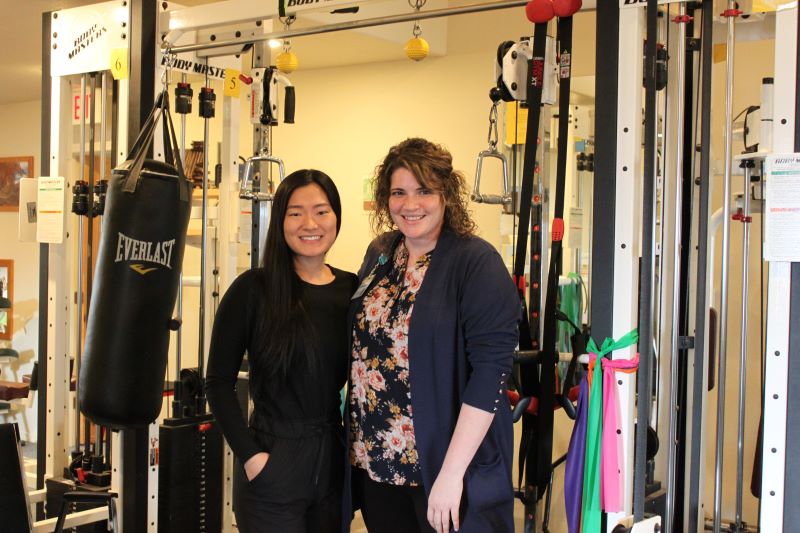

Posted November 12, 2023
Increased Number of Babies Born with Syphilis
by Sally A. Hoger, Contributor
Syphilis reached epidemic levels in the United States in the 1940’s but the introduction of antimicrobial agents has kept case levels low. However, in the last few years, we have seen case levels rise close to the levels seen in 1950 along with an increase of syphilis in babies. The number of newborns with syphilis in the United States surged more than 10-fold in the last decade, the U.S. Centers for Disease Control and Prevention (CDC) reported this week. The agency said 3,761 cases were recorded in 2022, the highest in over 30 years, up from 334 cases in 2012.
In New Mexico the situation is worse than other areas of the United States. New Mexico has the 2nd highest rate of both syphilis disease and congenital syphilis (transmitted by women to babies while giving birth) in the nation. In 2021, the US congenital syphilis rate was 77.9 cases per 100,000 live births (218% increase from 2017). In 2021, the NM congenital syphilis rate was 205.7 per
100,000 live births (4,300% increase from 2017) Last year, there were 76 reported cases of congenital syphilis in New Mexico and eight of the babies died. If the child survives, the disease can also confer birth defects such as blindness, deafness, and deformed bones. These findings have prompted the New Mexico Department of Health to issue a Public Health Order last month advising that all pregnant women be tested for syphilis at the first prenatal exam, during the third trimester and when giving birth. Resources for prenatal care in Raton are limited, so most women travel to nearby cities for care. San Rafael Hospital in Trinidad routinely screens all pregnant women for syphilis, but this facility only provides care during the first trimester. Desert Rose Women’s Resource Center in Santa Fe also screens patients for syphilis, but they too are unlikely to see all patients throughout the pregnancy. Therefore, it is difficult to determine if the state public health advisory regarding testing for syphilis three times during pregnancy is being met. If you, or a friend or family member is pregnant, please know that this simple laboratory test could save the life of the baby or prevent serious complications.

October 25, 2023
Raton High School Hosted Community Blood Drive
Raton High School hosted a community blood drive on Wednesday, October 25, 2023 from 10:00 AM until 3:00 PM in the high school gymnasium. To schedule a donation, call (877) 258-4825 or visit www.vitalant.org
Photos by Frank Mahannah

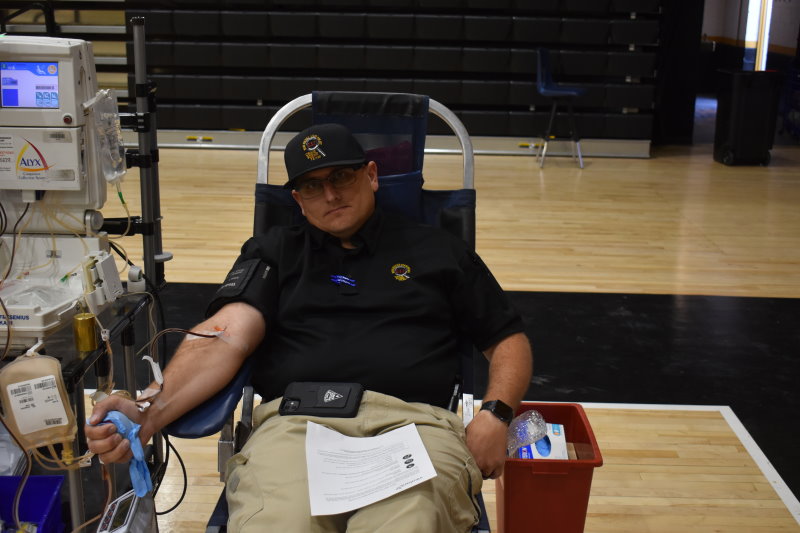
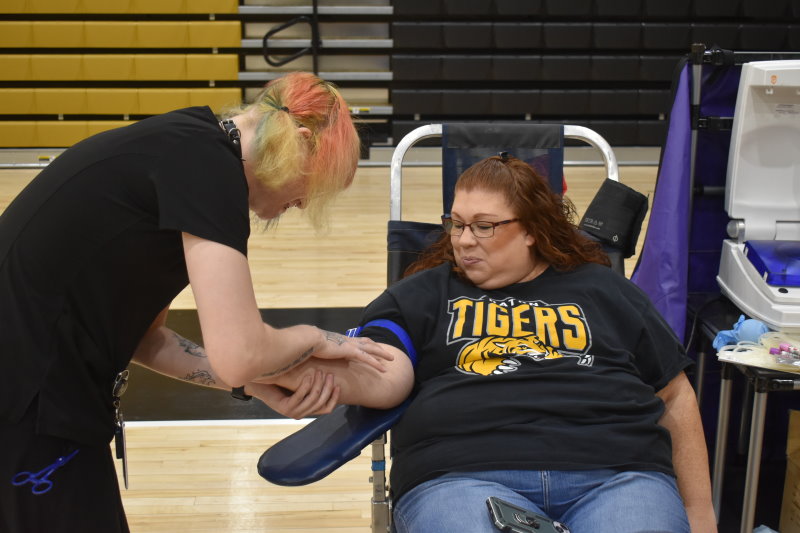

August 17, 2023
Local Swimmer Reaches 900 Mile Milestone
Reprinted with permission from Raton Regional Aquatic Center

Congratulations to Sue Wortman! Sue completed her 900th mile of lap swimming here at Raton Regional Aquatic Center, on Thursday August 17, 2023. Sue has been a member of Raton Regional Aquatic Center since 2011. She began her 900 mile journey by swimming 3x a week. When Sue retired from Raton Public Schools after a 34 year career as an elementary school teacher she started swimming 4-5 times a week. Sue took of a year due to an injury and came back healthy and stronger. Sue has been a daily visitor to our facility for the past 12 years.
Congratulations Sue on your journey to a healthier life.
Our Health
Each of the following health-related articles is provided by Rocky Mountain Physical Therapy.
Neuropathy
By: Ashley Van Winkle

I am from Colorado Springs and am getting my doctorate in Physical Therapy from University of St. Augustine in Austin, TX. I love karaoke, weightlifting, anything Christmas, and cooking. I will be graduating in December 2023 and am looking forward to going to Disney World to celebrate.
Peripheral Neuropathy
Neuropathy is nerve damage that is most associated with diabetes but can also occur from traumatic events such as injuries, alcoholism, vitamin imbalances (Vit B12 deficiency), infections, chemotherapy drugs, or vascular/blood issues which decrease oxygen supply to your feet and hands.
Symptoms can include pin-and-needles sensation, weakness, numbness, tingling, or burning which is most felt in the feet or hands. Other possible side effects are poor balance and/or slow reflexes.
Management and Treatment
Physical therapy can help in adapting and managing your nervous system changes that you are experiencing. This can include working on balance, preventing falls, strengthening, dry needling/acupuncture electrical nerve stimulation (TENS), and reflex training.
Depending on the severity of your symptoms, you may want to talk to your doctor about medications for neuropathy as that can be beneficial.
Natural options to help the nerves regenerate and recover include eating a balanced diet, daily exercise, taking supplements and vitamins, and try to obtain and maintain a healthy weight.
This can feel very overwhelming looking at a list of ‘to do’s”. Start with ababy step. Try walking for 20-30 minutes after work, or having one less soda a day, or eating only half a bag a chips while binging a show (we’re all guilty of that!) Don’t try to change too many things at once, otherwise it is easier to fall back into our old habits. Take it one step at a time.
Diabetic Neuropathy
Diabetic Neuropathy affects 60-70% of the U.S population. Symptoms can be mild to severe, and symptoms are most felt in feet and hands: but it can also affect your trunk and/or pelvis. This means that you can experience weakness of muscles including the pelvic floor which can lead to urinary stress or incontinence.
*If you are experiencing these symptoms, and have not been diagnosed, please contact your doctor.
